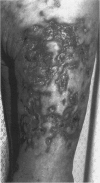Abstract
Patients who are critically ill and have large areas of skin loss or breakdown present a difficult management problem. They require the combination of intensive therapy facilities to support failing organs and specialized skin care, sometimes including extensive debridement and reconstruction. The expertise required for both aspects of treatment are found uniquely on a burns unit. We present five patients with large areas of cutaneous loss or damage secondary to a variety of non-burn aetiologies who were managed on a burns unit. We suggest that a burns unit may be the most appropriate place for such patients to be treated during both the acute phase of their illness and the later stages of surgical reconstruction and physical rehabilitation.
Full text
PDF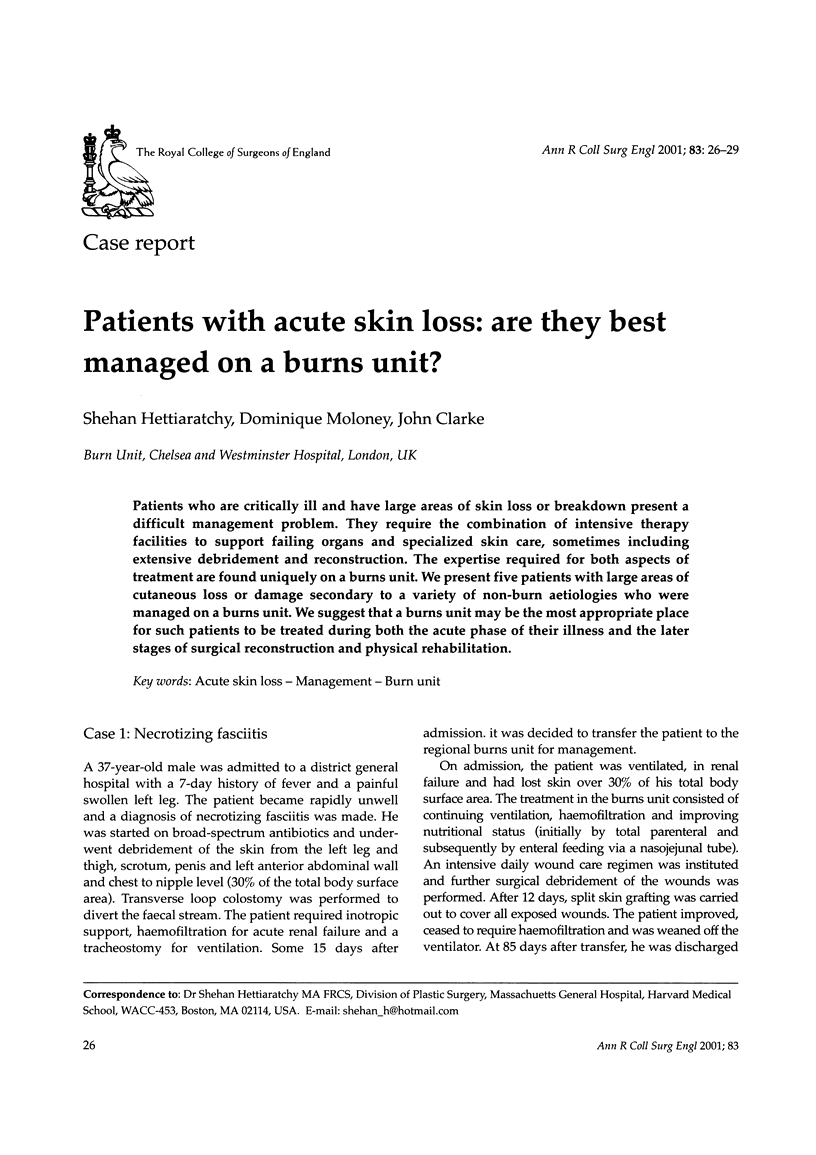
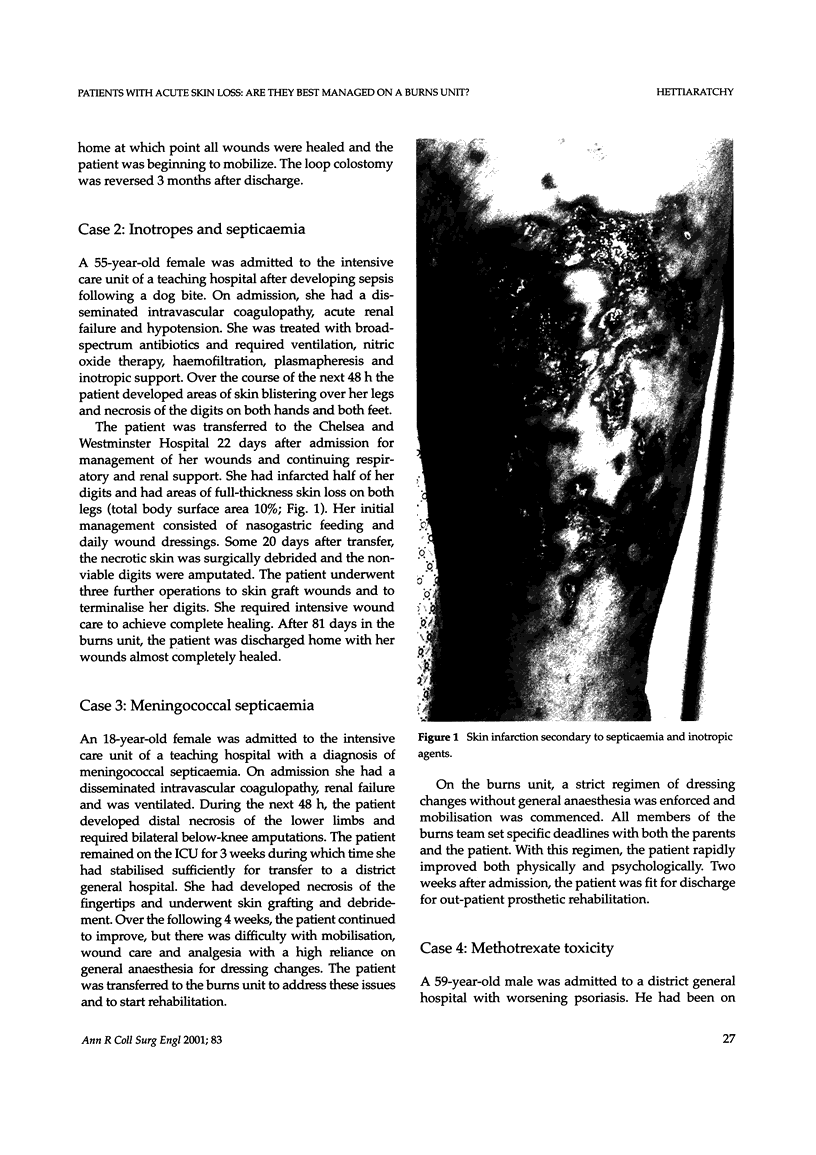
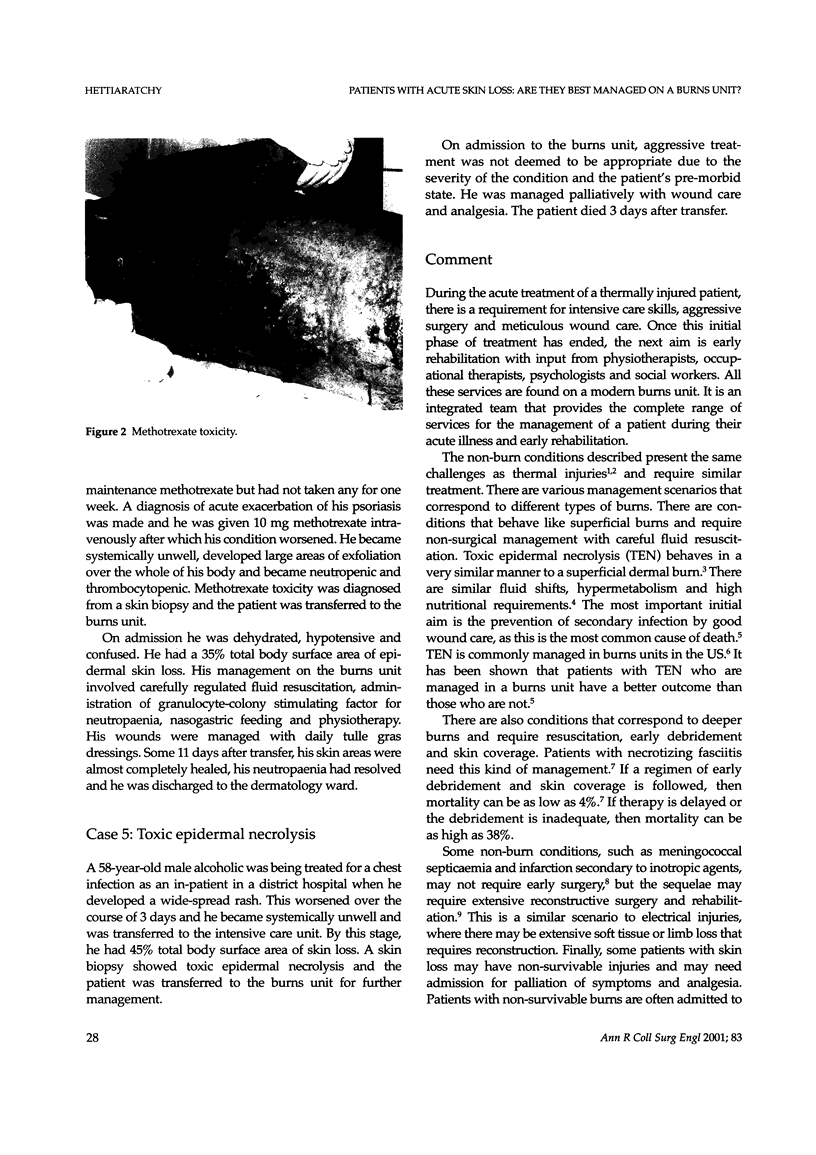
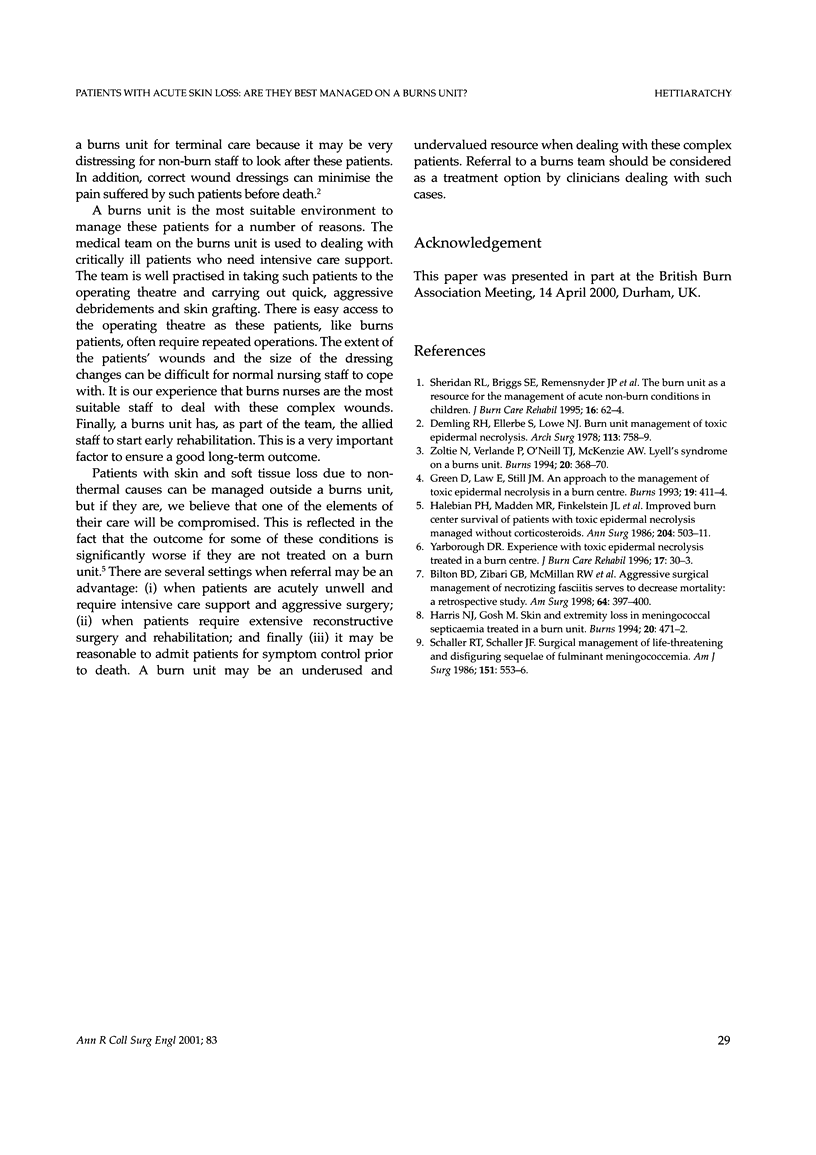
Images in this article
Selected References
These references are in PubMed. This may not be the complete list of references from this article.
- Bilton B. D., Zibari G. B., McMillan R. W., Aultman D. F., Dunn G., McDonald J. C. Aggressive surgical management of necrotizing fasciitis serves to decrease mortality: a retrospective study. Am Surg. 1998 May;64(5):397–401. [PubMed] [Google Scholar]
- Demling R. H., Ellerbe S., Lowe N. J. Burn unit management of toxic epidermal necrolysis. Arch Surg. 1978 Jun;113(6):758–759. doi: 10.1001/archsurg.1978.01370180100019. [DOI] [PubMed] [Google Scholar]
- Green D., Law E., Still J. M. An approach to the management of toxic epidermal necrolysis in a burn centre. Burns. 1993 Oct;19(5):411–414. doi: 10.1016/0305-4179(93)90063-e. [DOI] [PubMed] [Google Scholar]
- Halebian P. H., Corder V. J., Madden M. R., Finklestein J. L., Shires G. T. Improved burn center survival of patients with toxic epidermal necrolysis managed without corticosteroids. Ann Surg. 1986 Nov;204(5):503–512. doi: 10.1097/00000658-198611000-00001. [DOI] [PMC free article] [PubMed] [Google Scholar]
- Harris N. J., Gosh M. Skin and extremity loss in meningococcal septicaemia treated in a burn unit. Burns. 1994 Oct;20(5):471–472. doi: 10.1016/0305-4179(94)90047-7. [DOI] [PubMed] [Google Scholar]
- Schaller R. T., Jr, Schaller J. F. Surgical management of life-threatening and disfiguring sequelae of fulminant meningococcemia. Am J Surg. 1986 May;151(5):553–556. doi: 10.1016/0002-9610(86)90542-8. [DOI] [PubMed] [Google Scholar]
- Sheridan R. L., Briggs S. E., Remensnyder J. P., Gagnon S. W., Doody D. P., Ryan D. P., Tompkins R. G. The burn unit as a resource for the management of acute nonburn conditions in children. J Burn Care Rehabil. 1995 Jan-Feb;16(1):62–64. doi: 10.1097/00004630-199501000-00012. [DOI] [PubMed] [Google Scholar]
- Yarbrough D. R., 3rd Experience with toxic epidermal necrolysis treated in a burn center. J Burn Care Rehabil. 1996 Jan-Feb;17(1):30–33. doi: 10.1097/00004630-199601000-00008. [DOI] [PubMed] [Google Scholar]
- Zoltie N., Verlende P., O'Neill T. J., McKenzie A. W. Lyell's syndrome on a burns unit. Burns. 1994 Aug;20(4):368–370. doi: 10.1016/0305-4179(94)90072-8. [DOI] [PubMed] [Google Scholar]



